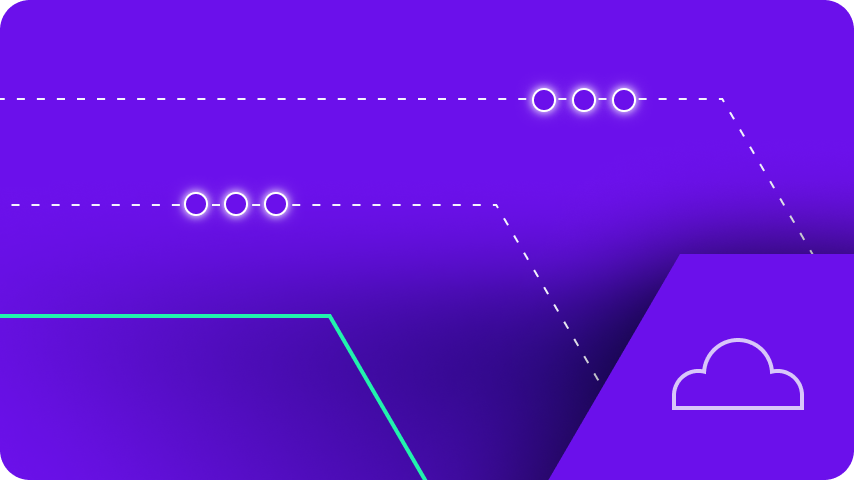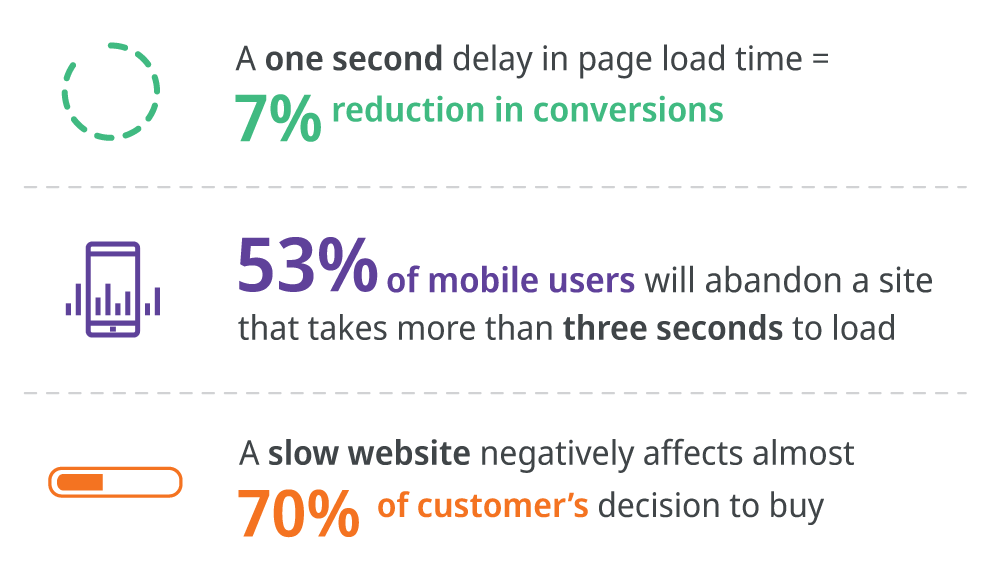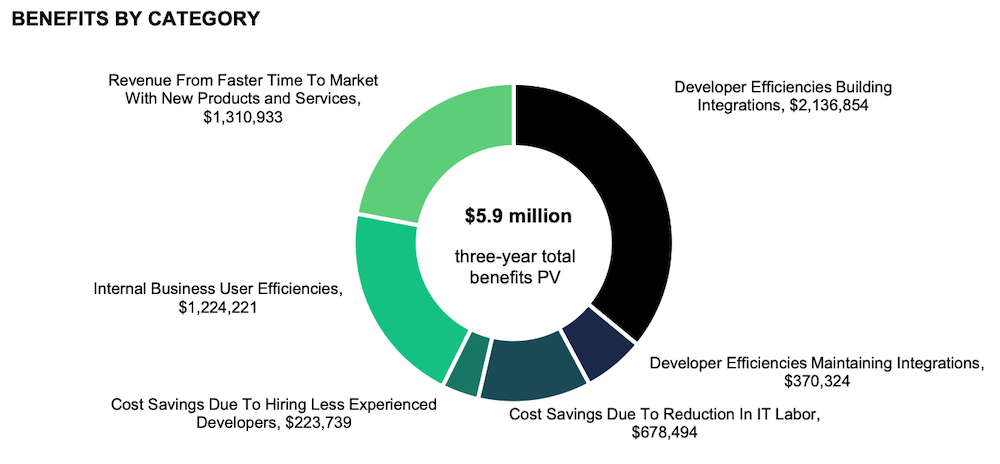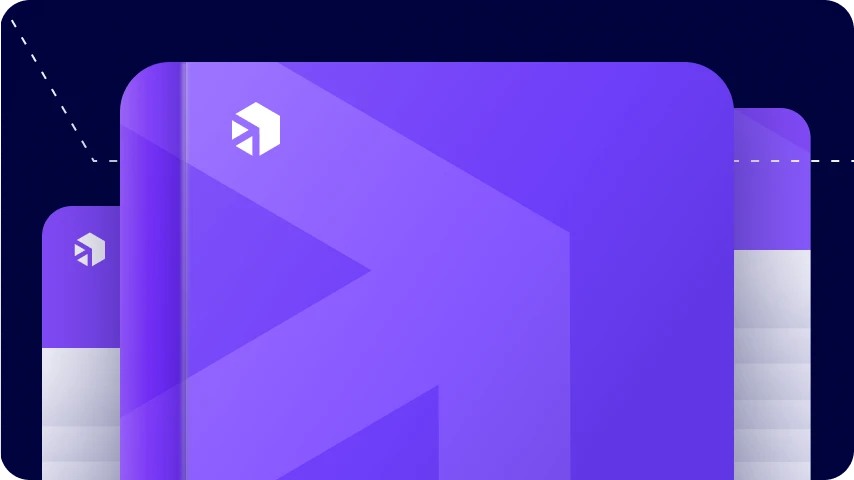
A integração na nuvem é a conexão e coordenação de diversos aplicativos de software, dados e serviços em diversas plataformas de nuvem, aumentando a eficiência e facilitando a transformação digital dentro de uma organização.

A integração na nuvem é a conexão e coordenação de diversos aplicativos de software, dados e serviços em diversas plataformas de nuvem, aumentando a eficiência e facilitando a transformação digital dentro de uma organização.

Os dados de 2023 chegaram e o segundo relatório anual da Digibee Pesquisa de integração do estado da empresa, está fora! Entramos em contato com mais de mil profissionais de TI corporativos – de desenvolvedores da Web e arquitetos de sistemas a CTOs e CIOs – em toda a América do Norte para entender as tendências, desafios e oportunidades atuais de integração.
Agora estamos mergulhando em algumas das principais descobertas com uma série de postagens de blog – esta enfoca os orçamentos de TI e o custo da integração.

A migração para a nuvem está se tornando cada vez mais comum, mas também complexa. Embora a maioria das organizações já tenha movido pelo menos parte de seus ativos digitais para a nuvem, estratégias de migração ainda enfrentam interrupções e atrasos com frequência.
Mas o fracasso não é inevitável. Um roteiro bem desenvolvido para migração pode ajudar a remover barreiras e evitar erros comuns. Siga esta checklist simples para garantir que você tem tudo o que precisa para uma transição tranquila.
>> Agende uma demonstração personalizada com nossa equipe de especialistas e veja como o iPaaS da Digibee trará eficiência ao seu negócio.
As iniciativas de transformação digital e migração para a nuvem se tornaram o principal motivo pelo qual as empresas adotam soluções de integração. E embora uma parceria com um provedor de integração possa minimizar interrupções e períodos de inatividade durante a migração, você ainda precisará de um plano estruturado para otimizar essa transição.

Compreender o que você espera alcançar é essencial para o sucesso da migração para a nuvem. Identifique os fatores que estão motivando a sua mudança para a nuvem e como você determinará se atingiu seus objetivos. Sua organização está buscando:
A próxima etapa para desenvolver sua estratégia de migração para a nuvem envolve planejar o ambiente de destino na nuvem. Isso pode incluir a escolha de um provedor de nuvem – atualmente 87% das organizações usam uma estratégia multi-cloud , então não presuma que seu ambiente de nuvem atual seja a melhor opção para novos planos de migração.
Faça um inventário de seus dados, aplicativos, sistemas e infraestrutura para determinar o que será incluído na migração para a nuvem e o que permanecerá no ambiente atual. Identifique dependências e fluxos de dados que possam afetar (ou ser afetados por) sua transição para a nuvem.
Depois de identificar o que está envolvido no seu plano de migração para a nuvem e para onde os elementos serão migrados, é hora de planejar como a transição acontecerá:
Com os objetivos e o roadmap de migração estabelecidos, é hora de começar a migrar seus ativos para a nuvem. Trabalhando com um provedor de soluções de integração, você precisará:
Depois de concluir todas as etapas do seu plano de migração, é essencial validar o sucesso da transição antes de entrar em operação com as mudanças. Seu novo ambiente na nuvem deve ser uma cópia exata do ambiente de produção, permitindo testes rápidos para confirmar que todos os serviços críticos estão funcionando e que todos os dados estão acessíveis.
Os históricos de transações podem ser migrados de forma incremental ou em uma única operação – sua estratégia deve ser definida pelo volume e localização dos dados. Após a replicação das transações, você pode “virar a chave” e adotar o ambiente replicado na nuvem como o ambiente de produção. Desative as integrações relacionadas ao ambiente on-premises e desenvolva um plano para descomissioná-las.
A integração é o elo que conecta suas capacidades atuais ao que você busca alcançar na nuvem, reduzindo os riscos associados às estratégias de migração.
A Digibee desenvolveu uma solução de Integration Platform-as-a-Service (iPaaS) que facilita para sua equipe a tarefa de liberar dados de sistemas legados e alcançar suas metas na nuvem, seja qual for o objetivo. Nossa interface intuitiva e low-code simplifica o processo de integração, permitindo que desenvolvedores de todos os níveis de habilidade criem integrações que maximizam o valor dos investimentos na nuvem.
Nossas Relatório – 2023 State of Enterprise Integration destaca o papel essencial que a integração desempenha nas estratégias atuais de migração para a nuvem. Baixe sua cópia gratuita hoje ou agende uma demonstração sem compromisso para ver nossa solução em ação.
1Relatório do estado da nuvem de 2023, Flexera

Nossas segunda pesquisa anual do mercado de integração corporativa foi publicado hoje, revelando alguns insights intrigantes e gerando muita discussão.
Ao revisar os resultados da pesquisa, fiquei impressionado com uma constante. A maioria das organizações agora considera a integração um requisito fundamental para suas iniciativas de transformação digital. Na verdade, juntamente com a migração para a nuvem (um facilitador crítico na maioria dos projetos de modernização), a transformação digital é o principal objetivo de integração na pesquisa, com quase 30% dos entrevistados classificando-a como número um.
Este é um resultado surpreendente, especialmente quando você considera que apenas alguns anos atrás, a maioria das empresas ainda estava em dúvida sobre a implementação da tecnologia iPaaS.

A migração entre nuvens é exatamente o que o nome indica. Trata-se do processo de mover ativos digitais (dados, aplicações, etc.) de um ambiente de nuvem para outro.
Provavelmente, você já leu mais artigos do que gostaria sobre como, por que e quando mover seus sistemas, dados e aplicativos para a nuvem. Mas migração entre nuvens? Tente encontrar informações sobre isso, e suas buscas provavelmente trarão bem menos resultados.
Os resultados de pesquisa do Google sobre migração entre nuvens tendem a simplesmente ignorar o que o algoritmo interpreta como um “cloud” redundante na sua consulta e te direcionam de volta para os benefícios de mover para a nuvem e comparações entre soluções de nuvem pública, privada e multi-nuvem.
Ao investigar tipos de migração para a nuvem, você vai encontrar discordâncias sobre quantos existem – todos focados em migração de um sistema local para a nuvem. Um mix de re-hospedagem, redistribuição, reembalagem, refatoração, recompra, aposentadoria e retenção, só para constar.
Então, o que é migração entre nuvens? E por que alguém se importaria com isso?
>> Agende uma demonstração personalizada com nossa equipe de especialistas e veja como o iPaaS da Digibee trará eficiência ao seu negócio.
Se você já fez a migração para a nuvem, por que se dar ao trabalho de fazer tudo de novo? Mesmo as transições mais suaves e diretas ainda envolvem um nível de estresse. Ninguém termina um projeto que pode ser demorado e disruptivo e diz: “ei, vamos fazer isso de novo!”
Obviamente, estou exagerando. Ninguém está simplesmente movendo todos os seus dados e aplicativos de nuvem para nuvem em um jogo de Frogger de alto risco. Mas as empresas estão adotando a migração entre nuvens – mais frequentemente do que você pode imaginar. Por quê?
Quase toda empresa usa a nuvem de alguma forma. E 87% das organizações adotaram uma estratégia multi-cloud. Com vários ambientes de nuvem em operação, as chances de você mover dados de um para outro são altas, então a migração entre nuvens é mais comum do que o Google mostra. Mas o que está impulsionando esse tráfego entre nuvens?
Seu negócio está em constante evolução, e o que você precisa de um ambiente de nuvem também mudará. Nem todo ambiente de nuvem é adequado para todos os casos de uso (daí a adoção generalizada de estratégias multi-cloud), e é aí que entra a migração de dados entre nuvens.
Os provedores de serviços de nuvem têm pontos fortes e fracos diferentes, assim como você tem prioridades variadas para os sistemas que estão na nuvem. Essas diferenças podem justificar a migração de dados de uma nuvem para outra.
Nem todos os ambientes de nuvem são configurados para suportar as mesmas necessidades. Por exemplo, uma solução de nuvem projetada para armazenar muitos dados que raramente são movidos não oferecerá as melhores taxas se você precisar fazer uploads e downloads frequentes.
Informações críticas para os negócios ou dados sensíveis de clientes precisam ser armazenados em um ambiente de nuvem que atenda a padrões específicos. Se o ambiente em que você iniciou não puder atender a esses requisitos, você pode optar por migrar dados vitais para outro lugar.
O ambiente que você escolheu pela sua alta segurança pode não oferecer o desempenho necessário para aplicativos de uso intenso. Quaisquer sistemas voltados para o cliente hospedados na nuvem precisam de níveis elevados de desempenho e mínimo tempo de inatividade.
Se os recursos ou capacidades do seu ambiente de nuvem não correspondem às suas metas ou necessidades em mudança, você pode precisar encontrar uma nova solução. A necessidade de mais controle, maior transparência ou melhor integração entre sistemas se encaixam nessa categoria.
Como a migração de nuvem para nuvem não apresenta os mesmos problemas que podem afetar migrações de on-premise para nuvem, muitos dos desafios normalmente associados à migração não se aplicam aqui. Você (presumivelmente) já desenvolveu uma estratégia de nuvem e definiu o que espera alcançar com a migração. Você entende os custos, a segurança e a conformidade, bem como as necessidades técnicas, e, idealmente, obteve a adesão organizacional para o uso da nuvem. Mas isso não significa que a migração de uma nuvem para outra seja garantidamente sem complicações.
Os principais desafios associados à migração de nuvem para nuvem estão relacionados ao conceito básico de mudança e à dor que ela pode causar:
Existem boas razões para fazer a migração para a nuvem, mas também desafios que tornam o processo pouco atrativo. Se você decidiu, por qualquer motivo, que mover ativos de seu ambiente atual para um novo espaço digital é o melhor a fazer, existem etapas que pode seguir para minimizar a dor e a interrupção. Convenientemente, a maioria dessas etapas são as mesmas que você seguiu (ou deveria ter seguido) quando migrou para a nuvem pela primeira vez:
Na Digibee, desenvolvemos um iPaaS low-code que pode ajudar a tornar a migração de nuvem para nuvem fácil e sem complicações. Os elementos flexíveis, escaláveis e reutilizáveis do iPaaS da Digibee garantem que as movimentações para a nuvem, ou migrações de nuvem para nuvem, aconteçam de forma contínua.
Veja você mesmo. Traga para nós o seu cenário de caso de uso de nuvem para nuvem e agende uma demonstração sem compromisso para saber como nossa solução pode simplificar o processo de migração.

A migração para a nuvem está longe de ser um conceito novo. Serviços baseados em nuvem se tornaram tão onipresentes que os utilizamos diversas vezes ao dia, muitas vezes sem nem perceber. No entanto, apesar da presença universal do cloud computing, o que está mudando é sua importância no mundo dos negócios.
Deixando de ser apenas um “diferencial”, adotar a nuvem tornou-se essencial para o crescimento, sucesso e competitividade das empresas, especialmente diante do surgimento de nativos digitais — organizações que nunca operaram fora da nuvem — que utilizam novas tecnologias e modelos de negócios para desafiar o status quo.
Embora a maioria das empresas já utilize tecnologias de nuvem de alguma forma, ainda é crucial avaliar os benefícios da migração para a nuvem em relação aos riscos e desafios que ela pode trazer para suas operações.
>> Agende uma demonstração personalizada com nossa equipe de especialistas e veja como o iPaaS da Digibee trará eficiência ao seu negócio.
A migração para a nuvem é o processo de mover ativos digitais – dados, aplicações, recursos e sistemas – para um ambiente de computação em nuvem.

Embora a migração para a nuvem geralmente seja associada à transferência de ativos de um sistema legado local para a nuvem, a migração de uma nuvem para outra está se tornando cada vez mais comum . Isso ocorre porque as empresas buscam reduzir a complexidade, os custos e aumentar a segurança de seus sistemas.
Sua empresa precisa de todas as ferramentas possíveis para continuar crescendo, inovando e prosperando, e a nuvem pode ajudá-la a escalar, aumentar a agilidade, ampliar a receita e alcançar seus objetivos em um mundo em constante mudança.
Se você está entre as raras empresas que resistiram a uma transição em grande escala para a nuvem até agora, pode estar se perguntando o quão relevante isso realmente é neste momento. Será que você precisa mesmo fazer essa mudança?
Talvez sua infraestrutura atual seja “boa o suficiente” – ela tem mantido suas operações em funcionamento e impulsionado o crescimento do seu negócio. No entanto, o desenvolvimento de novas tecnologias está se acelerando, e as pressões que as organizações precisam estar preparadas para enfrentar em um mundo pós-pandemia estão aumentando.
A nuvem pode não ser o ambiente ideal para cada componente da sua tecnologia, mas sua empresa precisa explorar todas as opções disponíveis para continuar crescendo, inovando e prosperando. A nuvem pode ser a solução para escalar, aumentar a agilidade, expandir a receita e alcançar metas de negócios nesse cenário dinâmico e desafiador.
A migração para a nuvem não deve ser impulsionada apenas pela tendência de que “todos estão fazendo isso”. No entanto, sua organização pode obter uma série de benefícios com a migração para a nuvem se tomar essa decisão.
A nuvem oferece à sua organização a capacidade de crescer à medida que as cargas de trabalho evoluem e as demandas aumentam. Em comparação, a escalabilidade das soluções convencionais on-premises exige a compra e instalação de novos equipamentos de hardware, software, armazenamento e rede.
Muitos provedores de nuvem assumem a responsabilidade pela manutenção e atualizações regulares, o que significa que seu departamento de TI (possivelmente sobrecarregado) pode gastar menos tempo com tarefas repetitivas e focar mais em inovação.
A migração para a nuvem também pode ajudar as empresas a reduzir os custos com infraestrutura de TI. A natureza escalável de um ambiente em nuvem torna fácil ajustar os recursos conforme as necessidades mudam, evitando a sobrecompra para garantir capacidade durante períodos de demanda máxima.
Uma lição importante que os líderes empresariais aprenderam com a pandemia foi a importância da flexibilidade para lidar com o inesperado. Migrar dados e processos importantes para a nuvem significa que sua organização não ficará atrelada a um local específico de negócios e poderá se adaptar rapidamente quando as condições impedirem que a equipe trabalhe no local.
O ritmo da evolução tecnológica continua a acelerar, fazendo com que a vida útil dos investimentos em infraestrutura de TI seja cada vez mais curta. A migração para a nuvem transfere a responsabilidade pelas atualizações para o provedor de serviços, livrando sua organização do incômodo e dos custos relacionados às soluções que estão sendo descontinuadas.
Este benefício da migração para a nuvem está diretamente relacionado ao anterior. O desenvolvimento acelerado de novas tecnologias e ferramentas significa que as organizações com capacidade para adotar inovações como a inteligência artificial terão uma vantagem sobre aquelas que não conseguem.
O principal fator que leva ao fracasso ou a experiências disruptivas de migração para a nuvem é a falta de planejamento. Uma estratégia de ponta a ponta é crucial para mitigar os riscos de segurança da migração para a nuvem, minimizar as interrupções e manter os custos sob controle.
Antes de embarcar em uma jornada de migração para a nuvem, sua organização precisa considerar os requisitos específicos de dados ou cargas de trabalho que serão movidos para a nuvem, identificar dependências relacionadas à transição e definir claramente seus objetivos com a migração. Empresas que migram sem uma estratégia abrangente enfrentam uma série de desafios.
A economia de custos é frequentemente citada como um dos motivadores da migração para a nuvem, mas a falta de planejamento pode levar as organizações a enfrentarem custos de migração mais altos do que o esperado. O gerenciamento de despesas continua sendo um dos principais desafios para as organizações que utilizam a nuvem, e dados indicam que aproximadamente 32% dos gastos com a nuvem são desperdiçados.
Nem todas as soluções de nuvem são iguais. Provedores de serviços em nuvem frequentemente oferecem uma série de serviços, mas organizações com requisitos específicos devem garantir que suas necessidades sejam atendidas antes de iniciar a migração. Assinar um contrato e descobrir depois que o provedor não consegue entregar o que você precisa é uma receita para decepção, no melhor dos casos – e desastre, no pior.
Apesar da popularidade do uso da nuvem, a segurança continua sendo um bloqueio comum para a migração para a nuvem. O processo de transição de ativos digitais para a nuvem pode colocar aplicativos, dados e sistemas em risco, caso as ameaças e vulnerabilidades de segurança não sejam cuidadosamente consideradas e resolvidas antes do início da migração.
O desenvolvimento e execução de uma estratégia de migração para a nuvem estão diretamente relacionados à complexidade da infraestrutura existente. Sistemas legados com múltiplas dependências podem ser desafiadores para migrar, e problemas podem surgir se a equipe de migração não tiver a expertise adequada tanto no sistema que está sendo migrado quanto no ambiente de nuvem de destino.
Poucas empresas, se é que alguma, podem se dar ao luxo de interromper as operações do dia a dia enquanto realizam uma migração para a nuvem, mas o tempo de inatividade e os atrasos causados pela mudança de dados e sistemas da infraestrutura existente para a nuvem podem ter um impacto significativo no resultado final.
A justificativa para a migração para a nuvem nunca foi tão convincente: os benefícios continuam a aumentar, enquanto as desvantagens de resistir à transição se tornam mais evidentes. Deixe os especialistas da Digibee ajudar a reduzir os riscos da migração para a nuvem e a otimizar sua estratégia.
Baixe sua cópia gratuita de O futuro da migração para a nuvem para um mergulho profundo nas mudanças de metas e desafios da migração, dicas para medir o sucesso, casos de uso emergentes para a computação em nuvem e orientações detalhadas para garantir uma migração bem-sucedida e sem dores de cabeça.

Antigamente considerada só um jargão sem sentido e genérico entre os profissionais de tecnologia, a transformação digital se tornou uma alta prioridade para organizações de todos os tamanhos e setores.
A importância de adaptar sistemas legados, muitas vezes isolados, para se comunicarem com novas tecnologias e ferramentas se tornou dolorosamente clara durante a pandemia. A nova realidade dos modelos de trabalho híbridos e das empresas com foco digital forçou até mesmo os negócios mais resistentes à mudança a reconhecerem seu valor.
Mas o que é de fato a transformação digital?
>> Agende uma demonstração personalizada com nossa equipe de especialistas e veja como o iPaaS da Digibee trará eficiência ao seu negócio.

Há muitos benefícios financeiros na integração corporativa e no uso do iPaaS corporativo da Digibee, como a economia de custos ao permitir que desenvolvedores juniores sejam utilizados. Mas, além disso, há ganhos financeiros significativos a serem obtidos com a velocidade, especialmente os benefícios de uma receita mais rápida, graças a um ciclo de lançamento de produtos acelerado.
Um estudo recente conduzido pela Forrester, Total Economic Impact™ of Digibee Report forneceu uma análise independente que explorou sistematicamente os resultados de uma parceria com a Digibee para integração corporativa. Usando uma organização composta, modelada com base nas características das empresas entrevistadas, o relatório atribuiu mais de US$ 1.3 milhão dos US$ 5.9 milhões de benefícios totais em Valor Presente (PV) à capacidade de acelerar o tempo de lançamento de novos produtos e serviços — isso representa mais de um quinto dos benefícios financeiros totais!

A nuvem, combinada com tecnologias digitais, reinventou a forma como os varejistas se conectam e atendem seus clientes. Outrora domínio de megalojas e plataformas de comércio eletrônico com orçamento e recursos para oferecer suporte à infraestrutura local, hoje a nuvem está desbloqueando experiências digitais do cliente para varejistas de todas as formas e tamanhos.
E os comerciantes estão adorando, capazes de criar experiências personalizadas e selecionadas em vários canais enquanto aumentam as taxas de conversão e o valor médio do pedido (AOV). Mas nem sempre foi assim.
>> Agende uma demonstração personalizada com nossa equipe de especialistas e veja como o iPaaS da Digibee trará eficiência ao seu negócio.
O advento do comércio eletrônico remonta à década de 1960, quando a IBM lançou seu sistema de processamento de transações online (OLTP) para processar transações financeiras em tempo real.
A tecnologia foi utilizada no desenvolvimento de um sistema informatizado de reserva de passagens para a American Airlines chamado Semi-Automatic Business Research Environment (SABRE).
O sistema conectava computadores em diferentes agências a um grande computador mainframe IBM para processamento simultâneo de transações, com todos os agentes acessando as mesmas informações ao mesmo tempo.on at the same time.
![]() *Crédito da foto: IBM Icons of Progress
*Crédito da foto: IBM Icons of Progress
A custo de infraestrutura $ 40 milhões para desenvolver e instalar, o equivalente a mais de $ 402 milhões em 2022.
As compras online que conhecemos hoje não surgiram até a chegada da internet, com a primeira transação de varejo segura pela web ocorrendo em 1994. A Amazon embarcou no ano seguinte, lançando seu site de compras online (a maior livraria da Terra) e o mundo nunca olhou para trás.
Hoje, os varejistas de sucesso utilizam a nuvem para oferecer suporte a uma variedade de modelos de negócios digitais, incluindo online, na loja e híbridos.
Mas, embora as compras on-line tenham se tornado apostas importantes para a maioria dos varejistas (quase todo mundo tem um site), otimizar a eficiência e a lucratividade na nuvem depende totalmente da tecnologia que está por trás dela.

Com o sucesso intimamente ligado aos hábitos em constante mudança (e inconstantes) dos consumidores, é imperativo que a tecnologia de nuvem no varejo suporte mudanças rápidas. Isso nunca foi mais evidente do que durante a pandemia, quando os consumidores dos EUA entraram online em massa, acrescentando US$ 218.53 bilhões às vendas projetadas de comércio eletrônico nos EUA em um único ano (2020-2021).
Os varejistas que já tinham sua tecnologia de nuvem em ordem puderam mudar rapidamente e compartilhar as recompensas. Outros não tiveram a mesma sorte, incluindo Neiman Marcus Group, JCPenney, J. Crew e outros marcas líderes que entrou com pedido de proteção contra falência do Capítulo 11 durante a pandemia.
A velocidade é essencial para a agilidade e um dos aspectos mais críticos das soluções de TI de varejo na nuvem. Sem ele, até mesmo o site de comércio eletrônico mais chamativo falhará: A velocidade também é importante no back-end. Por exemplo, no início de sua jornada na nuvem, muitos varejistas selecionaram a arquitetura monolítica para seu site de comércio eletrônico, a prática de projetar e desenvolver um aplicativo completo em uma única unidade (front-end, API, serviços, balanceador de carga, banco de dados etc.).
A velocidade também é importante no back-end. Por exemplo, no início de sua jornada na nuvem, muitos varejistas selecionaram a arquitetura monolítica para seu site de comércio eletrônico, a prática de projetar e desenvolver um aplicativo completo em uma única unidade (front-end, API, serviços, balanceador de carga, banco de dados etc.).
Esse modelo fazia sentido, pois oferecia todas as funcionalidades de comércio eletrônico de que os varejistas precisavam em uma unidade ou produto. Infelizmente, aplicativos monolíticos não são muito ágeis. Em vez disso, eles estão fortemente acoplados, o que significa que, se algo der errado com uma função específica, todo o aplicativo poderá travar, incorrendo em tempo de inatividade caro. Além disso, novos recursos são demorados e complicados de adicionar, afetando a escalabilidade.
Como resultado, muitos varejistas estão migrando para a arquitetura de microsserviços, uma coleção de arquivos executáveis separados que podem ser mantidos e substituídos de forma independente sem reimplantar todo o aplicativo.
Por exemplo, um aplicativo de comércio eletrônico terá funcionalidades como listagem de produtos, adição de produtos a carrinhos, check-out de um pedido e pagamento. Com os microsserviços, cada uma dessas funções é desenvolvida e implantada de forma independente e integrada por meio de um gateway de API para uma pilha de tecnologia totalmente modular e combinável.
Os varejistas podem modificar preços, produtos e workflows no momento sem interromper o negócio. Quando (e não se) o mercado mudar, o retalhista pode ajustar a sua infraestrutura em tempo real para garantir que permanece em sintonia com o comportamento do consumidor.
Uma arquitetura de microsserviços depende da integração de sistema e dados para conectar todas as partes móveis.
A tecnologia de plataforma como serviço (iPaaS) de integração empresarial, em particular, suporta a flexibilidade de uma pilha de tecnologia combinável, onde aplicativos legados são substituídos e/ou conectados com aplicativos baseados em nuvem.
Com fluxos de dados simplificados de sistemas de informações de varejo, a empresa se beneficia de análises precisas, essenciais na previsão de varejo para prever estoque e demanda. Essas conexões ágeis permitem que a empresa ajuste facilmente sua infraestrutura para alavancar novas inovações sem incorrer em tempo de inatividade para executar o trabalho.
A Digibee fez parceria com muitos varejistas de sucesso para implementar sistemas e integração de dados. Um bom exemplo é Payless, uma rede internacional de varejo de calçados self-service. Ao implementar o eiPaaS da Digibee, a empresa conseguiu integrar uma plataforma segura de comércio eletrônico em mais de 200 lojas em 15 países, em menos de 30 dias, sem tempo de inatividade.
Com o DigiBee, Payless otimizou sua agilidade, mantendo os negócios normais mesmo durante picos de vendas em eventos de alto volume, como a Black Friday.
Um futuro saudável depende da capacidade do varejista de oferecer experiências digitais incríveis aos clientes. Para alcançar esses resultados, a empresa deve adotar rapidamente as inovações à medida que elas surgem, ou corre o risco de ficar para trás.
Uma arquitetura componível ou de microsserviços desempenha um papel crítico nesses resultados, permitindo que a organização substitua facilmente qualquer componente por algo melhor. Com o suporte da tecnologia eiPaaS, os varejistas podem evoluir rapidamente seus negócios.
Embora esse recurso tenha sido crítico durante a pandemia, ele também protege os negócios de interrupções no futuro, permitindo que os varejistas acomodem o que está por vir. E há muito para acomodar. Enquanto algumas tendências já estão em andamento, outras estão chegando:
Hoje, as compras online são uma capacidade crítica para qualquer varejista, com sucesso dependendo da agilidade e resiliência do negócio diante da mudança. Os varejistas capazes de acompanhar e até prever o que vem a seguir serão os pioneiros, garantindo e aumentando sua participação no mercado.
A tecnologia empresarial iPaaS da Digibee permite uma infraestrutura combinável baseada em nuvem, nivelando o campo de atuação para que varejistas de todos os tamanhos possam oferecer uma experiência de compra moderna enquanto amplificam sua voz e marca na nuvem. Contacte-nos para aprender mais ou agende uma demonstração.
– Um atraso de um segundo no tempo de carregamento da página = a Redução de 7% nas conversões
– 53% de usuários móveis vai abandonar um site que leva mais de três segundos para carregar
– Um site lento afeta negativamente a decisão de compra por quase 70% de clientes

Houve um tempo em que usar a nuvem era uma ideia inovadora para as empresas. Mas a evolução da tecnologia segue em frente, levando consigo o mundo corporativo. Simplesmente armazenar dados organizacionais na nuvem ou usar uma solução “como serviço” baseada em nuvem não é mais suficiente. Cloud-native é a nova nuvem. Mas por que o nativo da nuvem é importante?
>> Agende uma demonstração personalizada com nossa equipe de especialistas e veja como o iPaaS da Digibee trará eficiência ao seu negócio.

Lembra quando todos pensávamos que os robôs viriam para tomar nossos empregos? Acontece que essa era a solução errada para o problema que precisávamos nos preparar. Em vez de uma falta de vagas, as indústrias ao redor do mundo estão enfrentando uma escassez sem precedentes de funcionários qualificados.
Essa tendência é particularmente aguda nos departamentos de TI, e os líderes estão correndo para implementar estratégias de redução de custos de TI enquanto competem por um número cada vez menor de especialistas de que precisam mais do que nunca.
Em 2020, apenas 4% dos executivos de TI disseram que a falta de talento estava impedindo a adoção de novas tecnologias. Em 2021, esse número subiu para 64%, e os especialistas alertam que a batalha para conquistar e reter os talentos necessários será ainda mais intensa em 2023. E o Gartner prevê que, até 2025, “a volatilidade da mão de obra” fará com que 40% das organizações registrem perdas significativas nos negócios, forçando uma mudança na estratégia de talentos, passando de aquisição para resiliência.

>> Agende uma demonstração personalizada com nossa equipe de especialistas e veja como o iPaaS da Digibee trará eficiência ao seu negócio.
A escassez de talentos em TI tem sido impulsionada por uma série de fatores, incluindo exigências de contratação pouco razoáveis e a “Grande Renúncia” desencadeada pela pandemia. Mas o ponto em que a falta de mão de obra qualificada e a crescente demanda por TI se encontram é o ritmo acelerado da transformação digital, enquanto as empresas buscam modernizar sistemas legados para competir com rivais exclusivamente online.
As organizações que desejam desbloquear dados isolados e conectar novas tecnologias a arquiteturas antigas estão recorrendo à integração. A grande maioria – 93% – dos CIOs, desenvolvedores e arquitetos de sistemas reconhece que sua organização se beneficiará da integração. Ao mesmo tempo, apenas 7% implementaram com sucesso uma solução de integração – e a escassez de talentos está entre os cinco principais obstáculos.
Diante da necessidade urgente de modernizar e adotar novas tecnologias, agravada pela escassez de talentos em TI, as empresas estão recorrendo a plataformas low-code que não exigem especialistas de nicho para serem implementadas e utilizadas.
O que são plataformas low-code? Soluções low-code utilizam interfaces visuais intuitivas que simplificam tarefas de desenvolvimento, permitindo que pessoas sem conhecimentos especializados em programação construam ou personalizem as ferramentas necessárias para suas organizações.
A adoção de plataformas low-code cresce mais de 20% ao ano, e a Gartner prevê que mais da metade das empresas de médio e grande porte estarão usando essas soluções no próximo ano. Analistas também estimam que, até XNUMX, 80% dos produtos e serviços de tecnologia serão desenvolvidos fora dos departamentos de TI.
Uma Plataforma de Integração com Serviço (iPaaS) é uma solução de integração low-code que reduz as pressões causadas pela combinação do aumento da demanda por modernização e da escassez de talentos em TI. Essa abordagem capacita membros da equipe com menor expertise a assumir tarefas que antes eram exclusivas de desenvolvedores sêniores.
O relatório Total Economic Impact™ 1 da Forrester sobre a Digibee detalha os benefícios empresariais e as economias que as organizações podem alcançar ao implementar um iPaaS.

Fonte: The Total Economic Impact™ Of Digibee’s Enterprise Integration Platform As A Service (eiPaaS), um estudo comissionado conduzido pela Forrester Consulting em nome da Digibee
As organizações entrevistadas no relatório enfrentavam uma série de problemas relacionados à produtividade dos desenvolvedores com suas estratégias de integração existentes, incluindo:
A implementação do iPaaS da Digibee melhorou drasticamente a eficiência dos desenvolvedores de diversas maneiras:
Com o uso do iPaaS, equipes de TI menores foram capacitadas a realizar mais tarefas, permitindo que as empresas reduzissem custos com mão de obra sem comprometer sua capacidade de inovação.
Não deixe a escassez global de talentos atrasar seus planos de modernização e sua capacidade de competir em um mundo digital-first. A Digibee possui experiência comprovada em ajudar empresas a aumentar a produtividade dos desenvolvedores e reduzir os custos com mão de obra, enquanto diminui significativamente o tempo necessário para implementar uma estratégia de integração.
Baixe sua cópia do estudo The Total Economic Impact™ Of Digibee’s Enterprise Integration Platform As A Service e descubra mais sobre os benefícios mensuráveis que sua organização pode alcançar ao se tornar parceira da Digibee… ou agende uma demonstração para ver nossa solução em ação.
1Um estudo encomendado conduzido pela Forrester Consulting em nome da Digibee

A Digibee passou os últimos anos ajudando as organizações a conectar o antigo com o novo, permitindo que elas aproveitem importantes inovações de negócios, como migração para a nuvem, automação e experiências otimizadas do cliente.

X